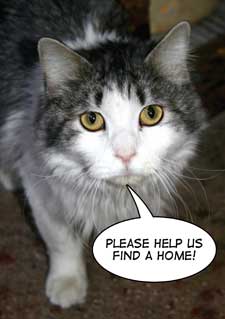
MAY 13, 2011
Postal Service announces top dog attack cities
Medical, Animal Behavior, Insurance Communities, promote Dog Bite Prevention Week
HOUSTON – The Postal Service released statistics today highlighting the cities where the most dog attacks occur nationwide. Houston tops the list with 62 letter carriers attacked in 2010. Nationwide last year, 5,669 postal employees were attacked in more than 1,400 cities, yet that pales in comparison to the 4.7 million Americans bitten annually – the majority of whom are children. Keep reading ...
BY SIGNE J. PLUNKETT, DVM | MAY 11, 2011
Heat Stroke
 As we move into the heat of the Arizona summer, there are many precautions we should take to protect our pets from heat stroke. Heat stroke is a syndrome in which the body temperature elevates higher than 104.9°F (normal for a dog is 100°F to 102°F) due to conditions outside the body. The signs of heat stroke in dogs and cats include panting, rapid heart rate, vomiting, subdued attitude, stumbling, trouble walking, and possibly seizures or coma and death.
As we move into the heat of the Arizona summer, there are many precautions we should take to protect our pets from heat stroke. Heat stroke is a syndrome in which the body temperature elevates higher than 104.9°F (normal for a dog is 100°F to 102°F) due to conditions outside the body. The signs of heat stroke in dogs and cats include panting, rapid heart rate, vomiting, subdued attitude, stumbling, trouble walking, and possibly seizures or coma and death.
Heat stroke is a common occurrence in dogs in the Arizona desert during the spring and summer. It is uncommon in cats that can roam and control their environment by seeking shade and a breeze. Dogs however are often at the mercy of their owners on a hot summer day.
Heat stroke occurs more often in pets with underlying heart or lung disease, breathing problems such as a collapsing trachea or laryngeal paralysis, obesity, and advanced age. Brachycephalic (“smooshed nose”) breeds of dogs, including the English Bulldog, pug, and Chow Chow are at an increased risk.
Treatment includes taking the dog out of the car or improving the environment. Cover the dog with a wet sheet or towel, or spray the dog with cool water. Be careful to test the water first if using an outside hose. Do not immerse the pet in cold or ice water. Rapid external cooling without circulatory support can be a shock to the system and add to complications.
Take your dog to the nearest open veterinary hospital. Oxygen will be given to the patient. External cooling with cool wet towels will be performed. External cooling should be stopped when the patient’s temperature = 103°F to avoid excessive cooling. IV fluids, sedatives, plasma, antibiotics, and additional medications may be needed. Despite treatment, the patient may die.
Heat stroke is definitely a condition that should be avoided. Do not walk your dog or take the dog hiking during the hottest part of the day (10 a.m. – 7 p.m. in the summer). As it warms up outside, start with short walks then gradually lengthen them. When running errands, it is best to leave the pet at home instead of in the car. By recognizing the symptoms of heat stroke and by avoiding exposing your pet to the hottest part of the day, you can protect your pet from the boiling desert heat.
Signe Plunkett, DVM., Pet Urgent Care Director at Animal Health Services has over 25 yrs of experience in the field and is the nationally recognized author of the textbook, Emergency Procedures for the Small Animal Veterinarian.



